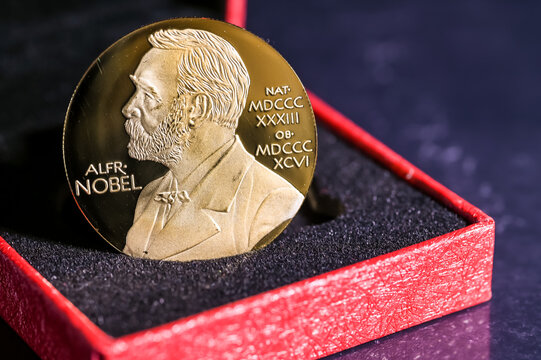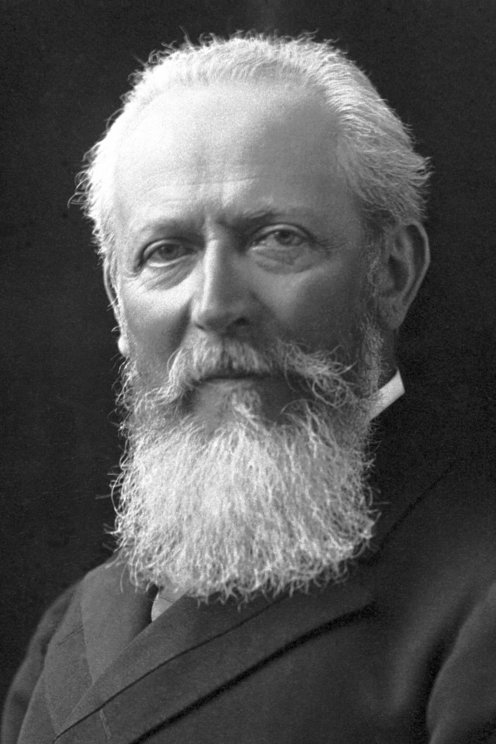The Nobel Prize in 1910: A Year of Scientific and Artistic Triumphs
The Nobel Prizes, established by the will of Alfred Nobel, have served as a prestigious recognition of outstanding contributions in various fields. In 1910, the prizes were awarded to individuals and institutions whose work had shaped their respective fields, with lasting impacts that continue to influence science, medicine, literature, and peace today.

This article delves into the five Nobel laureates of 1910, each recognized for groundbreaking work in their domains: Johannes Diderik van der Waals, Otto Wallach, Albrecht Kossel, Paul Heyse, and the Permanent International Peace Bureau.
The Nobel Prize in Physics 1910: Johannes Diderik van der Waals
Johannes Diderik van der Waals: “for his work on the equation of state for gases and liquids”

Johannes Diderik van der Waals, a Dutch physicist, was awarded the Nobel Prize in Physics in 1910 for his work on the equation of state for gases and liquids. This contribution, known as the van der Waals equation, revolutionized the understanding of the behavior of real gases and liquids, which differ significantly from the idealized models that were previously used.
Early Life and Education
Born in Leiden, the Netherlands, in 1837, van der Waals grew up in a modest household. Despite his family’s financial challenges, he pursued his education in physics and graduated from the University of Leiden in 1865. His early work involved studying the relationship between the properties of gases and liquids, which would form the foundation for his later groundbreaking contributions.
The Van der Waals Equation
The concept of a gas’s behavior had long been governed by the ideal gas law, formulated by Boyle, Charles, and Avogadro in the 17th and 18th centuries. This law assumed that gas molecules did not interact and that the volume of gas particles was negligible. However, this idealization did not hold true for real gases, especially at high pressures and low temperatures.
In 1873, van der Waals introduced his eponymous equation, which corrected these assumptions by accounting for intermolecular forces and the finite volume of gas molecules. The van der Waals equation is expressed as:
Here, represents the pressure, the volume, the temperature, and the gas constant. The constants and are empirical parameters that describe the attractive forces between molecules and the volume occupied by the molecules, respectively. Van der Waals’s equation provided a more accurate description of how gases behave under non-ideal conditions, particularly at high pressures and low temperatures, where gases are more likely to condense into liquids.
Impact and Legacy
Van der Waals’s work was instrumental in advancing the field of thermodynamics and statistical mechanics. It paved the way for the later development of quantum mechanics and molecular theory. The recognition of his work with the Nobel Prize in 1910 was not just a reflection of his contribution to physics but also a recognition of his ability to expand the boundaries of knowledge and refine existing models.
The Nobel Prize in Chemistry 1910: Otto Wallach
Otto Wallach : “in recognition of his services to organic chemistry and the chemical industry by his pioneer work in the field of alicyclic compounds”

Otto Wallach, a German chemist, was awarded the Nobel Prize in Chemistry in 1910 for his pioneering work in the field of organic chemistry, specifically his research on alicyclic compounds. Alicyclic compounds are organic molecules that contain carbon atoms arranged in non-aromatic rings, a category distinct from both aliphatic and aromatic compounds. Wallach’s work in this area laid the groundwork for the development of modern organic chemistry and greatly impacted the chemical industry.
Early Life and Education
Wallach was born in 1847 in the city of Krefeld, Germany. He pursued his studies in chemistry at the University of Göttingen, where he worked under the guidance of famed chemist Friedrich Wöhler, known for his synthesis of urea. Wallach’s early academic focus was on the chemical properties of organic substances, and it was through his innovative research in this area that he made his most significant contributions.
Alicyclic Compounds and Their Importance
Before Wallach’s work, organic chemistry had primarily focused on aliphatic and aromatic compounds. Alicyclic compounds, which feature cyclic structures that do not follow the rules of aromaticity, were not fully understood. Wallach’s extensive studies on the chemical structures of alicyclic compounds allowed chemists to better understand their unique properties, such as their stability, reactivity, and how they could be synthesized and manipulated in the laboratory.
His work also included the development of a method for the synthesis of compounds that are now integral to the chemical industry, including the production of various industrial solvents and synthetic chemicals used in pharmaceuticals, plastics, and dyes.
Legacy and Influence
Wallach’s research not only expanded the knowledge of organic chemistry but also had practical applications in the industrial and pharmaceutical sectors. His work on the stereochemistry of alicyclic compounds, which are now essential components in chemical synthesis, solidified his place as a key figure in the development of organic chemistry.
The recognition of Wallach’s contributions with the Nobel Prize in Chemistry in 1910 was a testament to his groundbreaking work in the field and the lasting impact he had on both theoretical and applied chemistry.
The Nobel Prize in Physiology or Medicine 1910: Albrecht Kossel
Albrecht Kossel: “in recognition of the contributions to our knowledge of cell chemistry made through his work on proteins, including the nucleic substances”

Albrecht Kossel, a German biochemist, was awarded the Nobel Prize in Physiology or Medicine in 1910 for his contributions to the understanding of cell chemistry, particularly his work on proteins and nucleic acids. Kossel’s discoveries were pivotal in the early study of biochemistry, molecular biology, and genetics, laying the foundation for later advancements in these fields.
Early Life and Education
Born in 1853 in Rostock, Germany, Kossel was initially interested in medicine, but his work in biochemistry led him to a career that would forever change the landscape of cellular biology. After completing his medical studies, Kossel worked in several laboratories, most notably in the laboratory of Felix Hoppe-Seyler, where he focused on the chemical nature of proteins.
Contributions to Cell Chemistry
Kossel’s most significant contributions were in the study of proteins and nucleic acids. His research on proteins helped elucidate the chemical composition of the building blocks of life, such as amino acids, and he also contributed to the discovery of the role of phosphorus in cellular metabolism. Kossel’s work on nucleic acids was groundbreaking. He discovered that nucleic acids were composed of a sugar, phosphate group, and nitrogenous base, which would later be critical in the understanding of DNA structure.
In 1901, Kossel’s work helped identify the structure of purines and pyrimidines, two classes of nitrogenous bases found in nucleic acids. These findings played a crucial role in the development of molecular genetics, and Kossel’s research laid the groundwork for future discoveries in DNA replication, transcription, and genetic inheritance.
Legacy and Influence
Kossel’s contributions to the study of proteins and nucleic acids were fundamental in shaping the field of molecular biology. His work opened the door for future scientists to explore the intricate details of genetics, cell function, and heredity. His recognition with the Nobel Prize in Medicine in 1910 underscored the importance of his work in the emerging field of biochemistry.
The Nobel Prize in Literature 1910: Paul Heyse
Paul Heyse : “as a tribute to the consummate artistry, permeated with idealism, which he has demonstrated during his long productive career as a lyric poet, dramatist, novelist and writer of world-renowned short stories”

Paul Heyse, a German author, was awarded the Nobel Prize in Literature in 1910 for his exceptional work as a lyric poet, dramatist, novelist, and writer of short stories. Heyse’s writing, which reflected his deep understanding of human emotions and the complexities of life, was recognized for its artistry and idealism.
Early Life and Education
Heyse was born in Berlin in 1830, the son of a professor of archaeology. He was introduced to literature at an early age and studied philology, the study of language in historical texts, at the University of Berlin. He was influenced by Romanticism, a literary movement that emphasized emotion, individualism, and the sublime. Heyse’s literary output was diverse, encompassing poetry, plays, and novels.
Contributions to Literature
Heyse’s literary works were characterized by their nuanced portrayal of human nature. His short stories, in particular, gained international acclaim for their intricate character development and exploration of moral and philosophical questions. In his novels and poetry, Heyse often explored themes of love, loss, and the human condition, offering insights into the complexity of emotions and relationships.
His most famous work, the novel L’Arrabbiata (1871), was widely praised for its psychological depth and the emotional turmoil of its characters. Heyse’s ability to convey the inner workings of the human psyche, combined with his poetic sensibilities, earned him a reputation as one of the foremost writers of his time.
Legacy and Influence
Paul Heyse’s contribution to literature was significant not only in the German-speaking world but also internationally. He was a key figure in the late 19th and early 20th centuries, contributing to the modern literary landscape. His works influenced later generations of writers, particularly in their exploration of the emotional complexities of human life. Heyse’s Nobel Prize in 1910 was a recognition of his mastery of the written word and his profound impact on literature.
The Nobel Peace Prize 1910: The Permanent International Peace Bureau
Permanent International Peace Bureau : “for acting as a link between the peace societies of the various countries, and helping them to organize the world rallies of the international peace movement”

The Nobel Peace Prize in 1910 was awarded to the Permanent International Peace Bureau (IPB), an organization dedicated to promoting peace and international cooperation. Founded in 1891 by Élie Ducommun and Fredrik Bajer, the IPB was instrumental in uniting peace societies from various countries and organizing the international peace movement.
Formation of the Permanent International Peace Bureau
The IPB’s mission was to create a network of peace societies, each advocating for disarmament, conflict resolution, and the peaceful resolution of international disputes. The organization played a pivotal role in organizing global peace congresses and conferences, facilitating dialogue between nations and promoting the idea that peaceful cooperation was both possible and desirable.
Contributions to Peace Movements
The IPB’s work included advocacy for international law, disarmament, and the peaceful arbitration of conflicts. During the early 20th century, the world was grappling with escalating tensions between major powers, and the IPB’s work in promoting diplomacy and peace was of utmost importance. By providing a platform for peace activists and encouraging governments to engage in peaceful negotiations, the IPB was a driving force in the international peace movement.
Legacy and Influence
The Permanent International Peace Bureau’s work had a lasting impact on the development of international diplomacy and peacekeeping efforts. The IPB’s influence is still felt today in the activities of organizations such as the United Nations and the International Court of Justice, which continue to work toward peace and conflict resolution.
Conclusion
The Nobel Prizes of 1910 were awarded to individuals and organizations whose work transformed their respective fields and left an indelible mark on the world. Johannes Diderik van der Waals’s insights into the behavior of gases and liquids, Otto Wallach’s pioneering research on alicyclic compounds, Albrecht Kossel’s discoveries in cell chemistry, Paul Heyse’s contributions to literature, and the Permanent International Peace Bureau’s work in promoting global peace all exemplify the spirit of the Nobel Prizes. These laureates' groundbreaking work continues to inspire and influence generations of scientists, writers, and peacekeepers.
Sources: Nobelprize.org
0 Comment to "The Nobel Prizes of 1910: Recognizing Groundbreaking Contributions in Physics, Chemistry, Medicine, Literature, and Peace"
Post a Comment